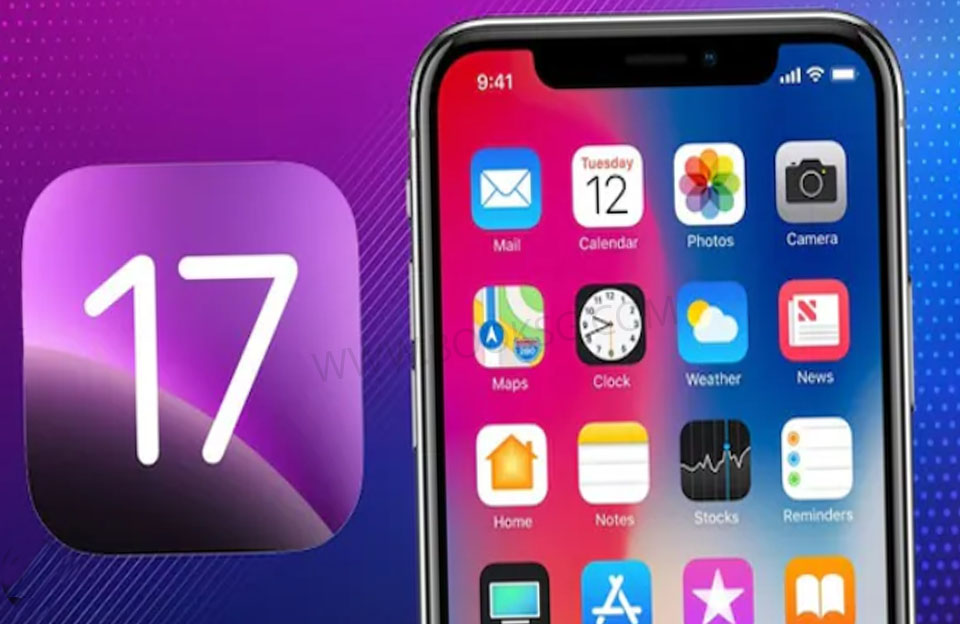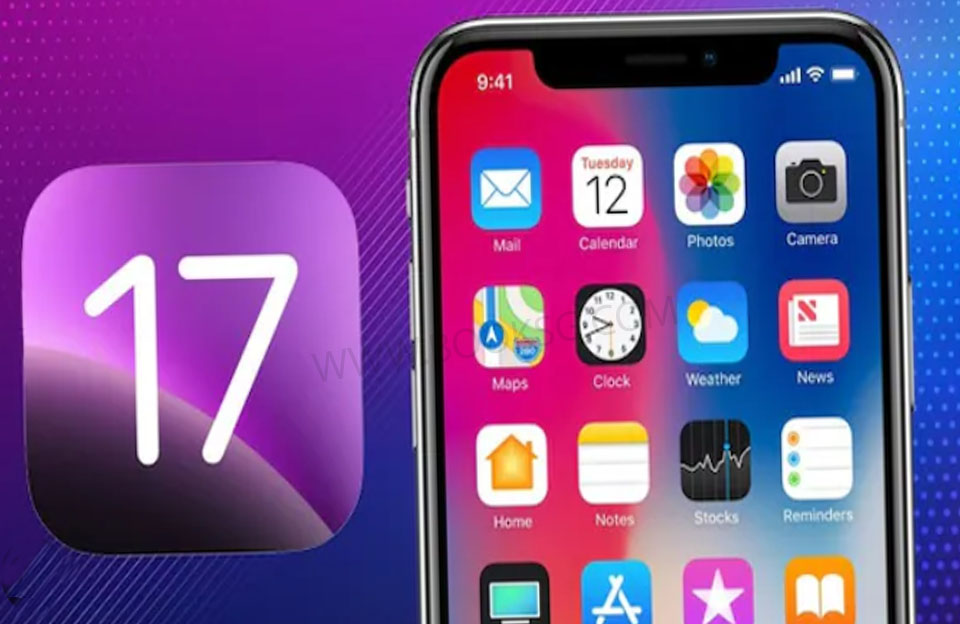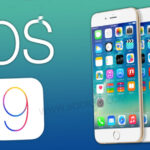iOS 17 was officially announced at Apple’s Worldwide Developers Conference (WWDC) on June 5, 2023 and was released to the public on September 18, 2023. Apple tradition still dictates a major iPhone design change every two years, but the company instead dedicated the yearly revision on communicating better, making everyday life smoother and creeping up personalization throughout the iPhone experience.

Support changed little for the update, though compatibility with iPhone 8, iPhone 8 Plus and iPhone X—powered by A11 Bionic—was dropped as Apple began winding down support for older devices in favor of newer ones to provide performance and security enhancements.
Phone, Messages & FaceTime: The new way of saying hola
In Phone, Messages, and FaceTimeApple has made major updates to the way people connect with Phone, Message and FaceTime becoming more expressive and meaningful.
FaceTime Contact Posters — These allow users to add things like photos, Memoji and stylized text for how they appear in FaceTime calls.
Voicemail Live Transcription: Showed a live transcription of the voicemail as he spoke, so users knew whether or not they were going to answer the call.
Messages App Updates:
Improved search filters.
Completely new stickers experience into which relaunch turned all emoji.
Swipe to reply on specific messages.
Safety Check-In: This feature automatically alerted the friends or family members of your choice when you arrived some place.
FaceTime Enhancements:
Allowing you to leave a video or audio message after FaceTime call has been missed.
This year, Apple added FaceTime support so that users could start—or handoff—calls to the larger screen of an Apple TV.
AirDrop and NameDrop: Smarter Sharing
NameDrop: Introduced with iOS 17. new AirDrop feature that enables two users to share contact details just by aligning their close facing iPhone together (or iPhone and Apple Watch). Better 3rd-party integration and AirDrop can now transfer files over the internet as long as devices are connected.
Autocorrect and Dictation: Smarter Input
Apple similarly improved autocorrect, increasing precision and decreasing the disruptive nature of its meddling. After watching user behavior, the system retained individual word choices and got better over time. Improved speech recognition model: Faster and more accurate dictation personality:
Standby: Improved Visual Mode.
The iPhone is a beast, and you really felt that with StandBy on iOS 17, this new power hungry full-screen interface when charging and on its side. StandBy turned the iPhone into a clever display, displaying:
Clocks
Photos
Live Activities
Widgets
It even included an Always-On Display and interactive widgets (on iPhone 14 Pro and later) to wake the lock screen useful even from sleep.
Other Key Features and Enhancements
Interactive Widgets — Users could now interact with widgets right from the Home Screen or Lock Screen (e.g., check reminders, play music).
Preview: A new journal app for private reflections, mood tracking and memory prompts that did not come to any beta or release until iOS 17.2 in December 2023.
Work and Home Browsing: Safari Profiles and Chapters were in place which made it possible to use both a work and home instance of the browser, each with its own cookies, history, and extensions.
The introduction of inline predictive text that surfaces word suggestions as you input and done so pretty much similar to the same feature that is found in Gmail and other modern platform.
New Mental Health Features such as Mood Tracking and anxiety, depression Screening Assessments in Health App.
Maps (Offline Maps — download to specific areas for offline navigation)
iOS 17.1 to 17.4: Key Updates
iOS 17.1 (October 2023): Apple Music favorites, StandBy display controls, and better AirDrop over cellular introduced
iOS 17.2 (December 2023): Official Journal app release, spatial video recording on iPhone 15 Pro models with playback through Vision Pro, new weather widgets.
iOS 17.3 (January 2024): Stolen Device Protection started, which added biometric authentication for sensitive actions when phone is not at familiar location
iOS 17.4 (March 2024) — Conform to the EU Digital Markets Act, and made it possible for third-party app stores and alternate browser engines in the EU—effectively a major relaxation away from Apple’s historic App Store policies.
1. When was iOS 17 released?
Apple announced iOS 17 at WWDC on June 5, 2023, and officially released it to the public on September 18, 2023. Unlike earlier updates that emphasized big redesigns, iOS 17 focused on refining everyday experiences and adding more personalization.
2. Which devices supported iOS 17?
iOS 17 supported the iPhone XS and newer models, meaning the iPhone X and iPhone 8 series were dropped. This shift reflected Apple’s push toward newer hardware with more powerful chips that could handle advanced AI and communication features.
3. What was the biggest new feature in iOS 17?
The most talked-about feature was Contact Posters, allowing users to create personalized full-screen visuals that appear when they call someone. Combined with customization for fonts, colors, and photos, this made phone calls more expressive and fun, reflecting Apple’s emphasis on personalization.
4. How did iOS 17 improve messaging?
The Messages app got major updates, including a redesigned stickers experience, better search filters, and an expandable menu for easier access to apps. Most notably, Apple introduced Check In, a safety feature that lets users share their journey with family or friends, notifying them automatically when they arrive safely.
5. What new feature came to FaceTime?
For the first time, iOS 17 allowed users to leave video and audio messages in FaceTime when someone missed their call. Additionally, FaceTime gained support for Apple TV via Continuity Camera, letting people use their iPhone as a webcam for large-screen video calls.
6. How did iOS 17 change autocorrect and typing?
Apple made a big improvement to autocorrect by using a transformer language model, making suggestions smarter and more accurate. It also added easier inline corrections and sentence-level predictions. This update was especially praised by users who had long been frustrated by “ducking” mistakes in typing.
7. What was StandBy mode in iOS 17?
StandBy was a brand-new feature that transformed the iPhone into a smart display when placed on its side while charging. It could show widgets like the clock, calendar, photos, and Live Activities, making the iPhone useful even when idle — particularly for use on a desk or bedside table.
8. What improvements were made to AirDrop?
AirDrop gained a new feature called NameDrop, allowing users to exchange contact information simply by bringing two iPhones (or an iPhone and Apple Watch) close together. AirDrop also got the ability to continue large file transfers over the internet if devices moved out of range, improving convenience.
9. What health and accessibility features were added?
iOS 17 introduced a Journal app (later released in iOS 17.2), designed to encourage reflection and gratitude through prompts and photo suggestions. Accessibility got major upgrades like Assistive Access, a simplified interface for users with cognitive disabilities, and Personal Voice, which let people at risk of losing their speech create a digital voice.
10. How was iOS 17 received overall?
iOS 17 was seen as a refinement update rather than a groundbreaking overhaul. Features like StandBy, Contact Posters, Check In, and improved autocorrect were widely appreciated, while the Journal app and accessibility improvements showed Apple’s focus on inclusivity. Overall, it was praised for making the iPhone feel more personal, intelligent, and useful in daily life.




Pingback: Exploring the Power of the iPhone 15 Pro - Mobile Updates Hub | New Phones, Software, and Tips